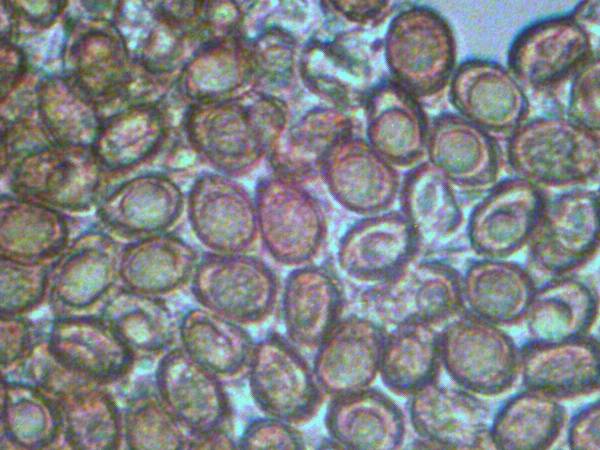Ganoderma carnosum Pat.
Phylum: Basidiomycota - Class: Agaricomycetes - Order: Polyporales - Family: Ganodermataceae
Distribution - Taxonomic History - Etymology - Identification - Culinary Notes - Reference Sources
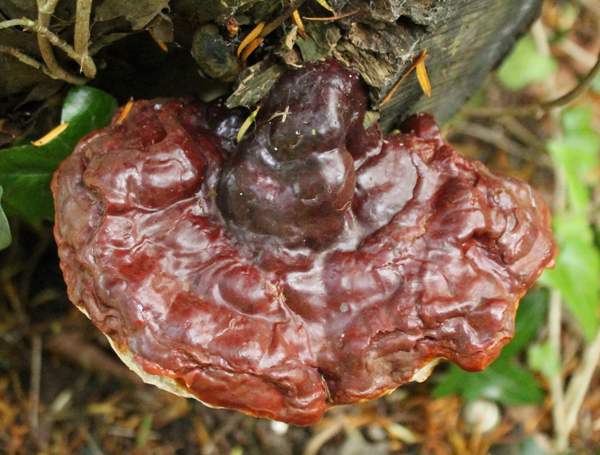
Ganoderma species are notoriously difficult to identify with confidence because of their variability but, unlike other species in this genus, which are primarily found on hardwoods, Ganoderma carnosum is an annual bracket which grows on conifers, and in Britain it is nearly always found on Yew trees. At maturity the pores of these bracket fungi release brown spores.
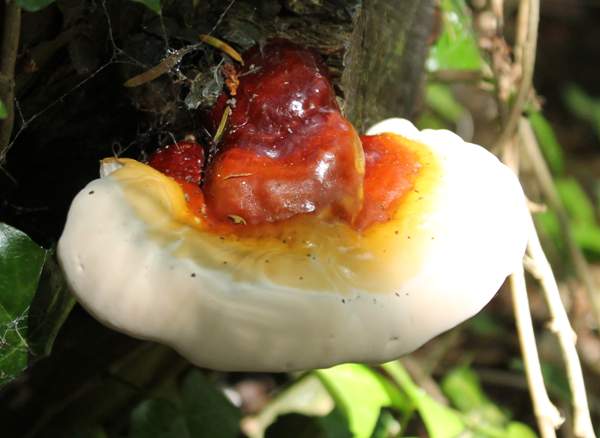
Distribution
A rare species in Britain, where it has been found in England and Scotland but is not formally recorded (as of September 2015) in the FRDBI from either Wales or Ireland, Ganoderma carnosum occurs also in many parts of mainland Europe including Austria, Czech Republic, Denmark, France, Germany, Hungary, Italy and Spain. This species has been reported from Japan and Mongolia.
Taxonomic history
The species was described scientifically in 1889 by French mycologist Narcisse Theophile Patouillard (1854 - 1926), who gave it the scientific name Ganoderma carnosum by which this bracket fungus is still generally known today.
Synonyms of Ganoderma carnosum include include Fomes carnosus (Pat.) Sacc., Scindalma carnosum (Pat.) Kuntze, and Ganoderma atkinsonii H. Jahn, Kotl. & Pouzar.
Etymology
From the Greek Ganos-, meaning brightness or polished to a bright sheen, and -derma meaning skin, comes the genus name Ganoderma - a reference to the lacquered appearance of the caps of these bracket fungi.
The specific epithet carnosum is derived from the Latin carnem and means 'fleshy' - the same Latin source also provides us with carnal (of the flesh) and carnage (slaughter).
Identification guide
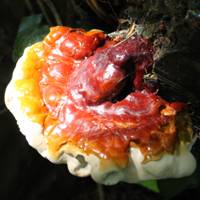 |
FruitbodyPerennial bracket; growing to 20cm across and up to 7cm thick, usually attached via a stout lateral stem 1 to 10cm long but sometimes with an eccentric ascending downward-tapering stem. Upper surface is reddish-brown becoming blackish purple when mature, and the stem is similarly coloured. The infertile crust is irregularly bumpy, often with poorly-delineated concentric grooves; shiny when young becoming duller and darker with age. (Spore dust may have to be removed from the cap in order to show the colour of the underlying pileus.) |
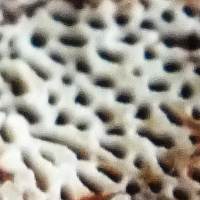 |
Fertile surfaceThe lower (fertile) surface is covered in roundish or angular creamy white to ivory pores typically 0.15mm across and spaced 3 to 4 per mm. The pore surface turns ochraceous brown with age or when bruised. |
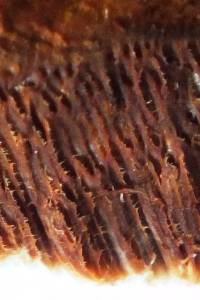 |
Tubes and PoresThe chocolate brown tube layer is up to 2.5cm thick, and the flesh immediately above the pore layer is a darkish chestnut brown. The flesh of the stem and that immediately below the pileus (cap 'skin') is whitish, becoming hazel brown with age. |
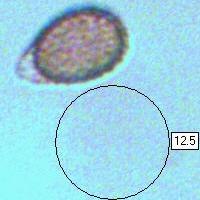 |
SporesEllipsoidal to ovoid, 10-13 x 7-8µm; ornamented with many warts. (Basidia are four-spored.) Inamyloid. Spore printChocolate brown. |
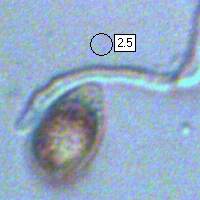 |
Hyphal systemTrimitic. The generative hyphae are thin walled, 2.5-6µm in diameter and septate, with clamps. |
Odour/taste |
Not distinctive. |
Habitat & Ecological role |
Parasitic/ and then saprophytic, almost exclusively on Taxus baccata (Yew trees) in Britain but more commonly on firs (Abies species) in central Europe. Like other Ganoderma species this bracket fungus causes white rot. On living trees it is nearly always fround growing low down on trunks or emerging from just below the ground where it is attached to tree roots. Ganoderma carnosum grows sometimes on felled trunks, and in some parts of Asia it has been produce in cultivation using bags of sawdust as the growing substrate. |
Season |
This annual bracket fungus releases spores in summer and autumn, and new fruitbodies can appear on the same host for several years. |
Similar species |
Ganoderma lucidum is very similar but usually somewhat redder; it grows almost exclusively on hardwoods and has smaller spores. |
Culinary Notes
In the Far East a wide range of medicinal claims are made for for various Ganoderma species, and extracts are made from the brackets and from their spores. We know of no recipes for soups or other mushroom dishes based on this tough bracket fungus.
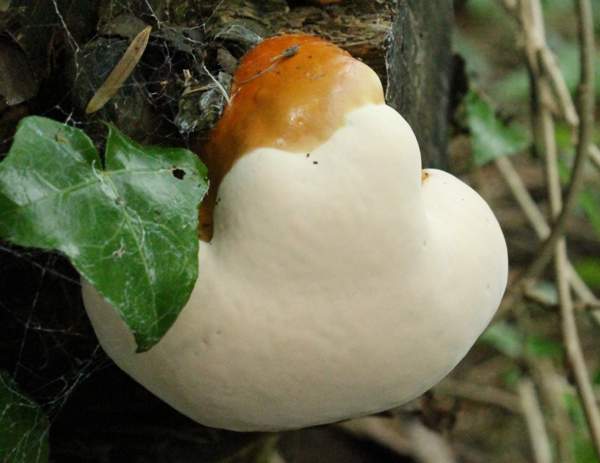
Reference Sources
, Pat O'Reilly, 2016
Patouillard, N. Le genre Ganoderma. Bull. Soc. Myc. France, vol. 5, p. 64, 1889.
Mattheck, C., and Weber, K. Manual of Wood Decays in Trees. Arboricultural Association 2003.
Dictionary of the Fungi; Paul M. Kirk, Paul F. Cannon, David W. Minter and J. A. Stalpers; CABI, 2008
Niedermeyer, T H et al; Antiviral Terpenoid Constituents of Ganoderma pfeifferi. J Nat Prod. 2005 Dec; 68(12): pp1728-31.
Taxonomic history and synonym information on these pages is drawn from many sources but in particular from the British Mycological Society's GB Checklist of Fungi.
Acknowledgements
This page includes pictures kindly contributed by Dave Lawman.
Fascinated by Fungi. Back by popular demand, Pat O'Reilly's best-selling 450-page hardback book is available now. The latest second edition was republished with a sparkling new cover design in September 2022 by Coch-y-Bonddu Books. Full details and copies are available from the publisher's online bookshop...
